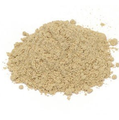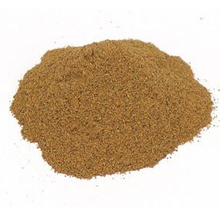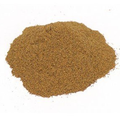 Loading... Please wait...
Loading... Please wait...- Home
- Bulk Herbs
- Herbs (S)
- Sarsaparilla Mexican Root Powder
Sarsaparilla Mexican Root Powder
Product Description
Sarsaparilla, Mexican Root Powder
Also Known As – Sarsaparilla, Mexican Sarsaparilla (Smilax medica), and Beer Root.
Wild Crafted- Mexico
Overview – The French physician Monardes described using sarsaparilla to treat syphilis in 1574. In 1812, Portuguese soldiers suffering from syphilis recovered faster if sarsaparilla was taken to treat the disease versus mercury, the standard treatment at the time. 3 Sarsaparilla has been used by many cultures for other ailments as well, including skin problems, arthritis, fever, digestive disorders, leprosy, and cancer.
Medicinal Uses – Sarsaparilla has been used to bind to endotoxins may be a possible mechanism of action as to how the plant exerts its effects. Problems associated with high endotoxin levels circulating in the blood stream such as liver disease, psoriasis, fevers, and inflammatory processes, all seem to improve with sarsaparilla.
- The saponin sarsasapogenin can be synthetically transformed into testosterone, for example, but it is unlikely that this can happen in-vivo. Some advertising claims of sarsaparilla being a “rich source of testosterone,” are unsubstantiated as there is no testosterone present in the plant. However, some sources state that sarsaparilla exhibits testosterogenic actions on the body, increasing muscle bulk and estrogenic actions as well to help alleviate female problems. In Mexico, the root is still used for its alleged aphrodisiac properties.
Parts Used – The root is the portion that is used in medicinal herbal remedies.
Cautions – Sarsaparilla should not be taken by pregnant or lactating women. Excessive amounts may cause stomach upset. If you take blood-thinning medications, do not take this herb. Men with prostate problems should not use. People with kidney problems or diabetes should use with caution. It may make some medications more effective or potent so be sure to let your physician know before you take this herb.
Preparation and Dosage - Typical doses of sarsaparilla for a variety of uses range from 0.3 to 2 g/day of the powdered root.
Disclaimer - The information presented herein by Mountain Maus’ Remedies is intended for educational purposes only. These statements have not been evaluated by the FDA and are not intended to diagnose, cure, treat or prevent disease. Individual results may vary, and before using any supplements, it is always advisable to consult with your own health care provider.
















